First marked in 2001, World Refugee Day is held every year on 20 June. War and persecution have displaced and forced more than 60 million people to flee their homes and seek safety elsewhere. Half of the world's refugees are from WHO's Eastern Mediterranean Region.
WHO is concerned about the health of families on the move. “Leaving no one behind” is a central tenet in the Organization’s response to providing access to health care throughout their journey: from their country of origin, as they transit and until they reach their final destination.
WHO is working with governments and partners to improve access to health services – one of the most basic human rights.
Photo gallery
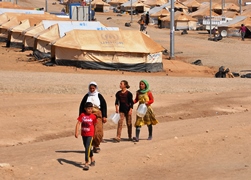 More than 30 million men, women and children from the Eastern Mediterranean Region are currently displaced, forced to flee their homes in search of safety, away from conflict and violence. Credit: WHO More than 30 million men, women and children from the Eastern Mediterranean Region are currently displaced, forced to flee their homes in search of safety, away from conflict and violence. Credit: WHO |
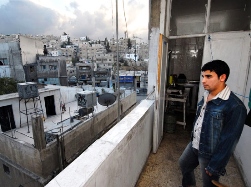 Having risked their lives, the majority find themselves living in safer environments, but still struggle to lead normal lives. Even in their place of refuge, displaced populations remain vulnerable, competing with host communities for jobs, and accessing limited services for health, education, shelter, water and sanitation. Credit: P. Sands/UNHCR Having risked their lives, the majority find themselves living in safer environments, but still struggle to lead normal lives. Even in their place of refuge, displaced populations remain vulnerable, competing with host communities for jobs, and accessing limited services for health, education, shelter, water and sanitation. Credit: P. Sands/UNHCR |
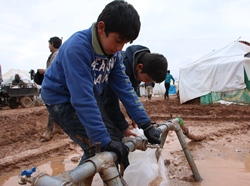 As their financial resources dwindle, displaced populations are forced to live in some of the poorest areas further burdening already vulnerable host communities. Limited health services and low vaccination coverage rates among children increase their risk of contracting vaccine-preventable diseases, such as measles or polio. Lack of safe water and sanitation increase the risk of waterborne diseases, such as malaria and cholera. Credit: WHO As their financial resources dwindle, displaced populations are forced to live in some of the poorest areas further burdening already vulnerable host communities. Limited health services and low vaccination coverage rates among children increase their risk of contracting vaccine-preventable diseases, such as measles or polio. Lack of safe water and sanitation increase the risk of waterborne diseases, such as malaria and cholera. Credit: WHO |
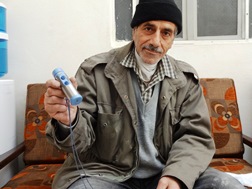 Patients with chronic noncommunicable diseases, such as hypertension, cardiovascular diseases, diabetes and cancer, face increasing difficulties in accessing life-saving treatment. Even when treatment is available, its cost is prohibitive and cannot be afforded over the long term. Credit: Heba Aly/IRIN Patients with chronic noncommunicable diseases, such as hypertension, cardiovascular diseases, diabetes and cancer, face increasing difficulties in accessing life-saving treatment. Even when treatment is available, its cost is prohibitive and cannot be afforded over the long term. Credit: Heba Aly/IRIN |
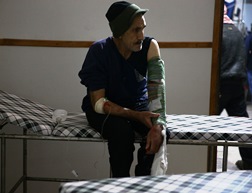 Fleeing displaced populations that are severely injured often need immediate emergency care, including surgical trauma and intensive care. With shortages in medical equipment, medicines and health staff in host countries, this care may not always be available, increasing the risk of permanent disabilities. Credit: WHO Fleeing displaced populations that are severely injured often need immediate emergency care, including surgical trauma and intensive care. With shortages in medical equipment, medicines and health staff in host countries, this care may not always be available, increasing the risk of permanent disabilities. Credit: WHO |
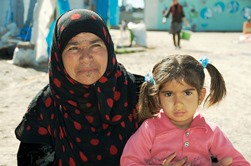 Many displaced populations who have been exposed to violence, especially women and children, require mental health care and psychosocial support. This situation is sometimes aggravated by a lack of qualified mental health professionals in conflict countries. Credit: WHO Many displaced populations who have been exposed to violence, especially women and children, require mental health care and psychosocial support. This situation is sometimes aggravated by a lack of qualified mental health professionals in conflict countries. Credit: WHO |
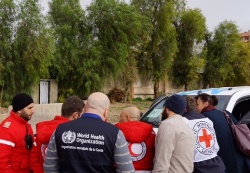 WHO and partners support the response to public health threats from infectious diseases by supplying safe drinking-water and sanitation, strengthening disease early warning systems, prepositioning emergency and trauma kits, medicines and medical supplies, and participating in emergency mass vaccination campaigns. Credit: WHO WHO and partners support the response to public health threats from infectious diseases by supplying safe drinking-water and sanitation, strengthening disease early warning systems, prepositioning emergency and trauma kits, medicines and medical supplies, and participating in emergency mass vaccination campaigns. Credit: WHO |
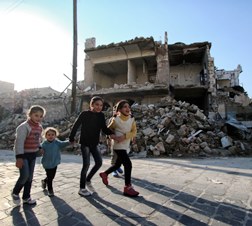 As the pressure on host countries continues to grow, meeting the increased health needs of displaced populations and host communities is essential in determining the health security of the entire Region. To support national health authorities in countries hosting displaced populations, WHO works with partners to ensure the provision of health services to both refugees and host communities. Despite the efforts, in several cases, the conditions continue to deteriorate across the Region causing many refugees to seek asylum elsewhere. Urgent action is required to engage in a visible and tangible demonstration of global solidarity based on a shared responsibility to meet the humanitarian needs of populations affected by emergencies. Credit: WHO As the pressure on host countries continues to grow, meeting the increased health needs of displaced populations and host communities is essential in determining the health security of the entire Region. To support national health authorities in countries hosting displaced populations, WHO works with partners to ensure the provision of health services to both refugees and host communities. Despite the efforts, in several cases, the conditions continue to deteriorate across the Region causing many refugees to seek asylum elsewhere. Urgent action is required to engage in a visible and tangible demonstration of global solidarity based on a shared responsibility to meet the humanitarian needs of populations affected by emergencies. Credit: WHO |
Related links
Five actions needed for a common approach in improving refugee and migrant health



